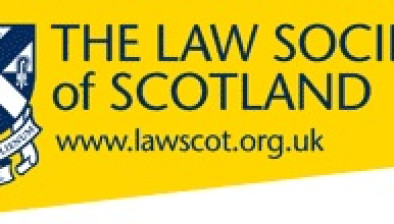James Hamilton: Edinburgh’s epidemics of the 19th century
 James Hamilton, writing for the WS Society, explores how enlightenment values helped Edinburgh defeat the twin scourges of typhoid and cholera.
James Hamilton, writing for the WS Society, explores how enlightenment values helped Edinburgh defeat the twin scourges of typhoid and cholera.
They didn’t speak of it, so we do not know what the builders of the Edinburgh New Town thought would have become of their city a century later. Abandoning the Old Town was never foreseen or contemplated, and the idea that the 1840s would see their ancestors’ historic wynds and closes broken down, overcrowded and racked by typhoid and cholera would no doubt have horrified them. But they might have hoped that in the face of such adversity the new approaches and thinking of the Scottish Enlightenment could be brought to bear.
Not since the ‘ill years’ of the 1690s had Scotland experienced a health crisis of the kind that would mark the nineteenth century’s middle years, but the first signs of trouble in the Old Town had come earlier, with fever erupting in Edinburgh in 1816 as the last soldiers of the Napoleonic War came back over the hills to home. The response then had been twofold – an architectural one, with William Burn (later the WS Society’s architect) and Thomas Hamilton proposing the building of new access routes to open up the medieval core of the city that would lead in time to the building of Victoria Street and George IV Bridge – and a medical one, with Henry Pulteney Alison (1790–1859), physician, social reformer and philanthropist, opening the New Town Dispensary and introducing new approaches including the quarantining of the sick and the fumigation of fever-stricken properties.
The truth was that restraints remained on the reach of Enlightenment thinking and that there were debates still to be bypassed or won. Echoing the Covid-19 lockdown situation today, the argument over the rights of the state to constrain the rights of the individual to the greater good of society was an Enlightenment one, and core to medical approaches in a time of emergency. It was an argument at the heart of Edinburgh politics, and not truly settled until Sir Henry Littlejohn’s 1865 Report on the Sanitary Condition of Edinburgh.
Also pressing was the debate about the role of the Church of Scotland, which in the early decades of the nineteenth century remained the most viable source of relief for the poor and indigent in the city and country alike. Thomas Chalmers (1780 – 1847), the Edinburgh minister, campaigned for a church-led approach to the problems of poverty and ill health, but such an essentially agrarian approach had ceased to be viable in an age of rampant urbanisation.
Chalmers’ ideas were defeated not so much by debate as by circumstance. Edinburgh had had a terrifying first encounter with cholera in 1832 and was about to have another when the first fever epidemic broke out across the Old Town in the early 1840s. In 1843, the Church of Scotland, the main source of relief in Scotland, was utterly riven by the Disruption, the climax to years of argument over patronage and the right of congregations to choose their own ministers. It would mark the demise of the Kirk as a credible solution for nationwide long-term care for the poor and sick.
The next twenty years would be among the worst in the entire history of the Old Town. Typhus and typhoid became endemic. Because the New Town, with its relatively low density, good communications and its fresh air, was relatively unaffected, the social divisions between the two accelerated. In 1846, the Scottish potato crop failed, leading to an outbreak of scurvy in the potato-dependent Old Town the following year. With the Irish Famine underway, the Old Town’s overcrowding was reaching new heights. Pressure on an already inadequate water supply became acute. Edinburgh had declared herself bankrupt in the early 1830s, and for ten years there had been very little new housing even in the New Town districts. Nor would there be for a long time to come. This was the backdrop to a political argument about the role of the authorities and to a steady enlargement of experience and knowledge in the policing of sanitation and the procedure to be followed in times of epidemic.
But the 1860s saw the return of prosperity to Edinburgh and with it the real breaking of the endemic state of fever in the Old Town. New thoroughfares Cockburn Street and Chambers Street reduced overcrowding and brought new ventures to the Old Town, such as a museum, new businesses, shops, and even hotels.
It was the persistence of Sir Henry Littlejohn (1826-1914) to argue and to persuade, and his determination to back up his proposals with strong empirical research, that would make the greatest difference. His 1865 Report determined policy until the beginning of the First World War, and it was influential both across the United Kingdom and overseas. Littlejohn’s approach succeeded because it followed the Scottish Enlightenment grain, with close analysis of the situation, the driving through administrative reform and improved methods. By the early 1880s, the death rate in Edinburgh had dropped by a third in twenty years.
Littlejohn had learned from Henry Pulteney Alison. Through Littlejohn, the Enlightenment approach extended still further in scope and time, because present in his classes at the University of Edinburgh was a young trainee doctor named Arthur Brock. Two years after Sir Henry Littlejohn’s death, the old hydropathic hospital at Craiglockhart began to fill with shellshocked officers, devastated by their experiences in the Great War battlefields of France. One of those officers was a young poet named Wilfred Owen, and it was Littlejohn’s pupil Arthur Brock that would help him onto the road to recovery.









